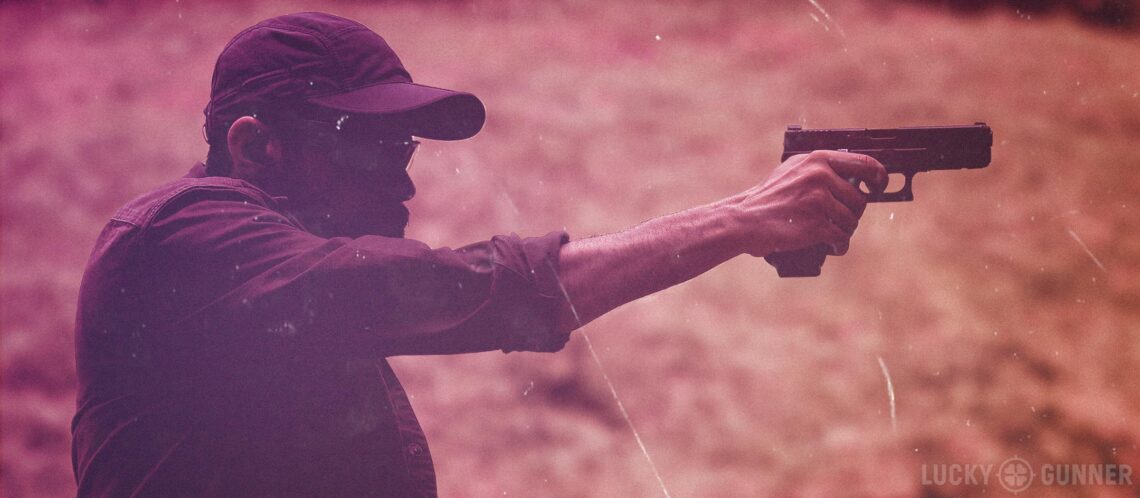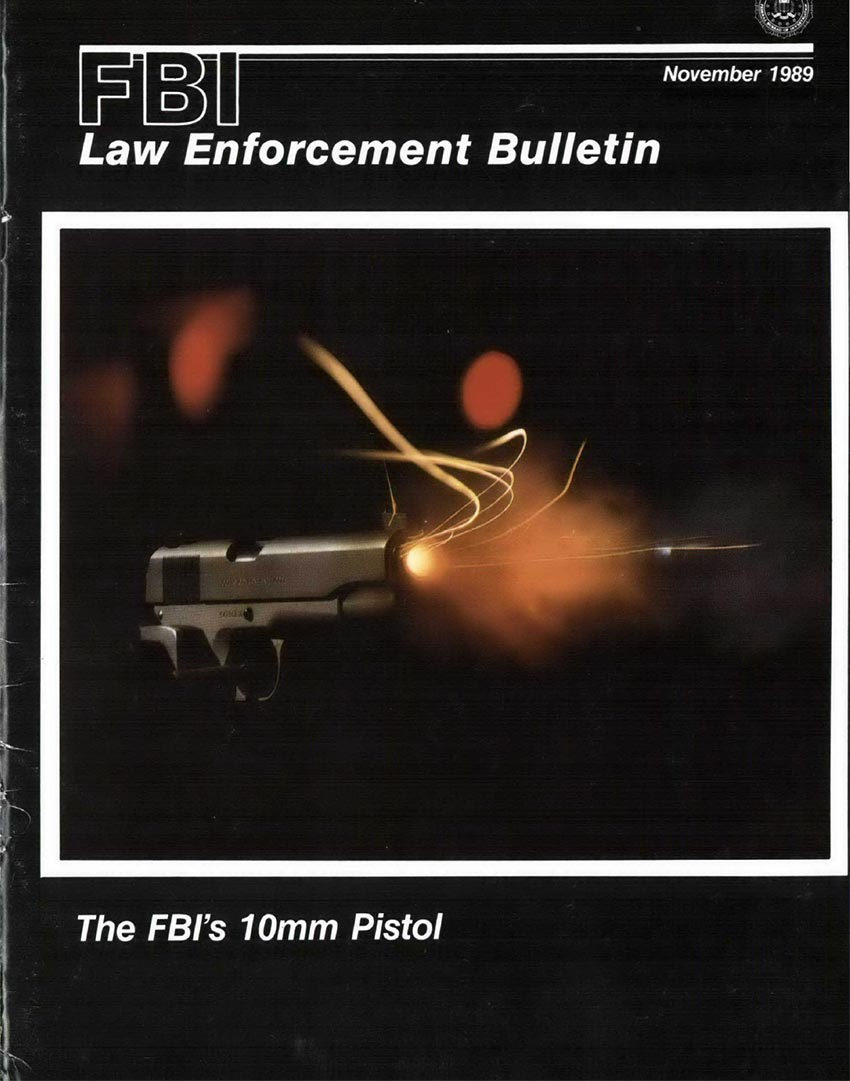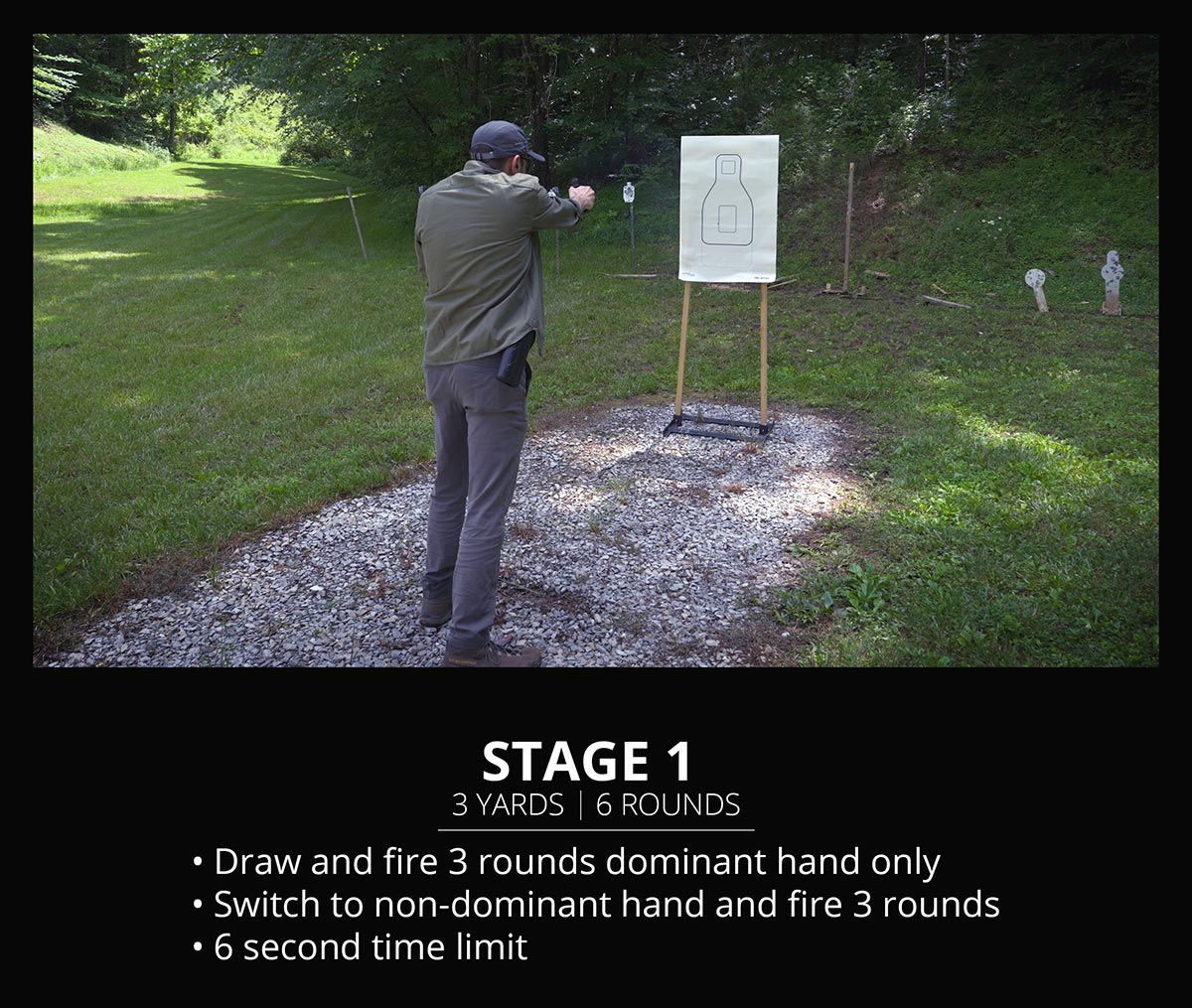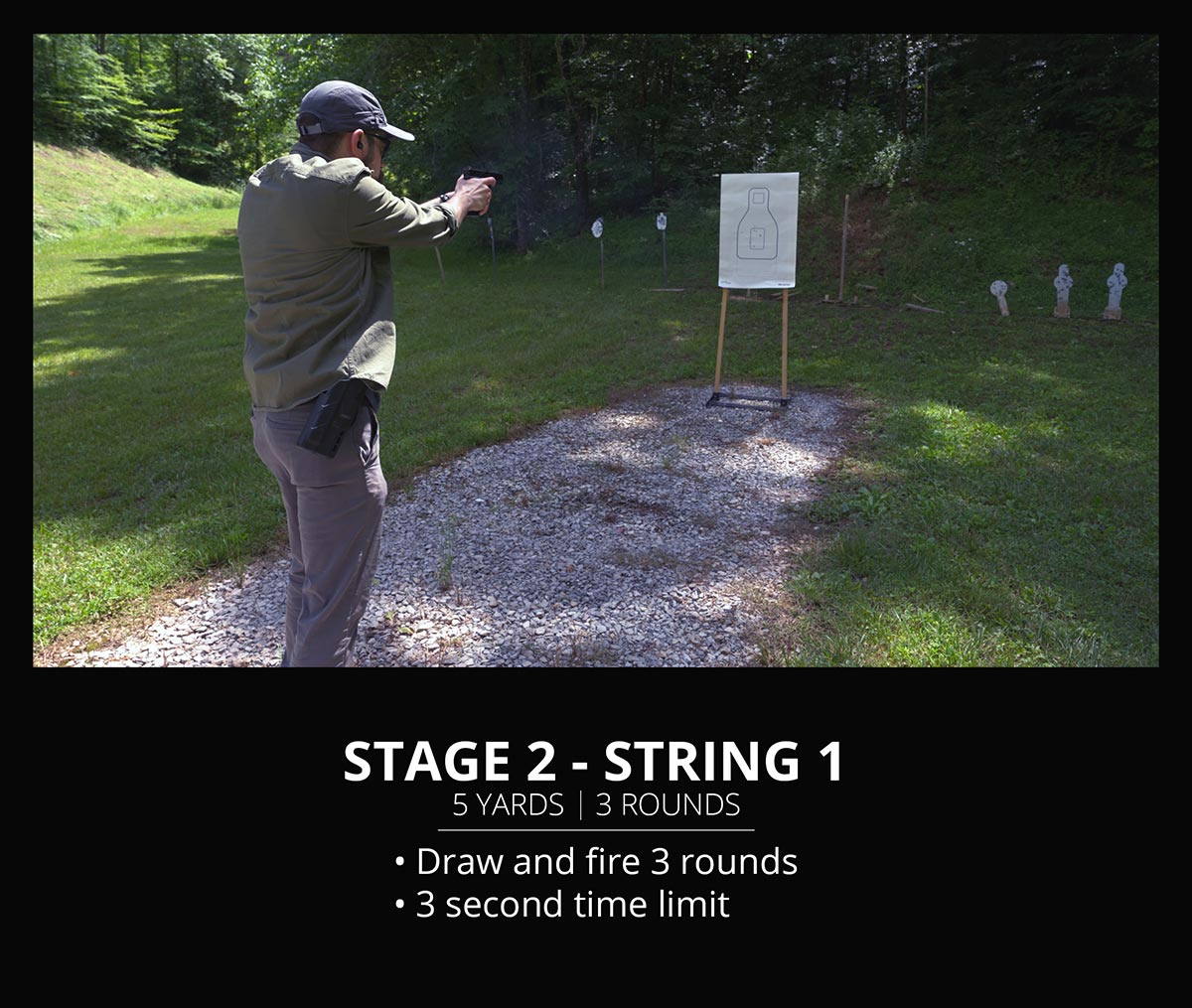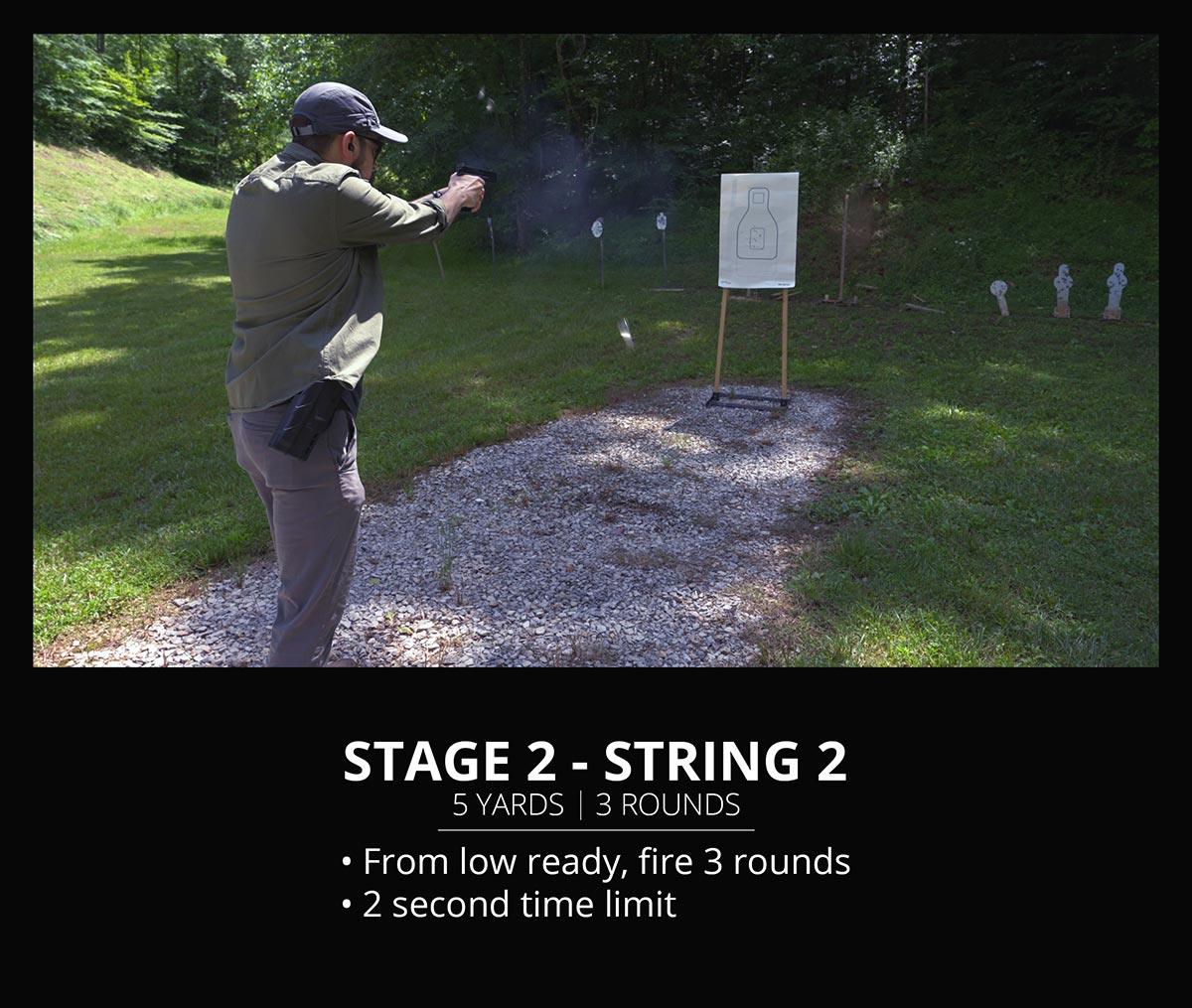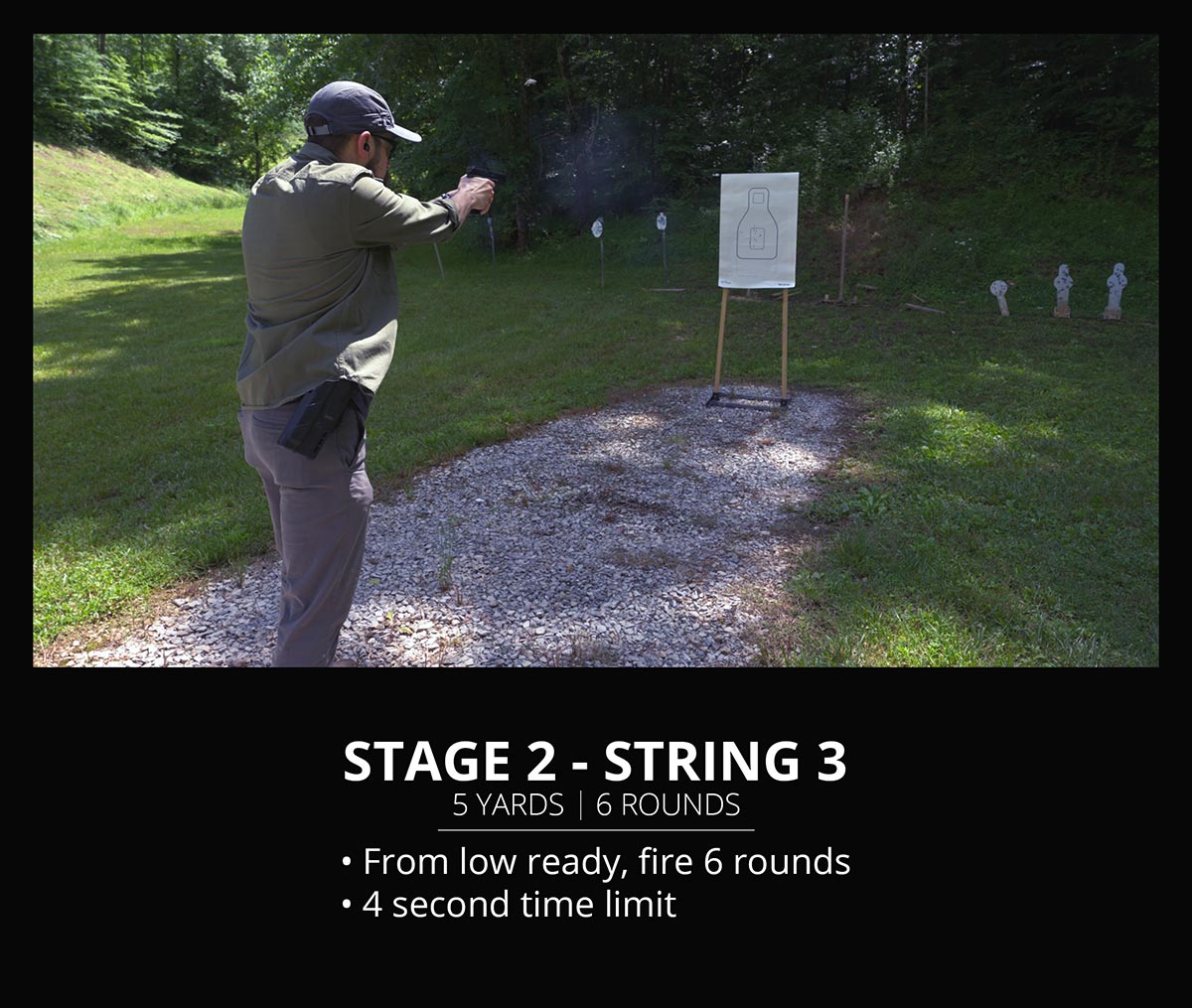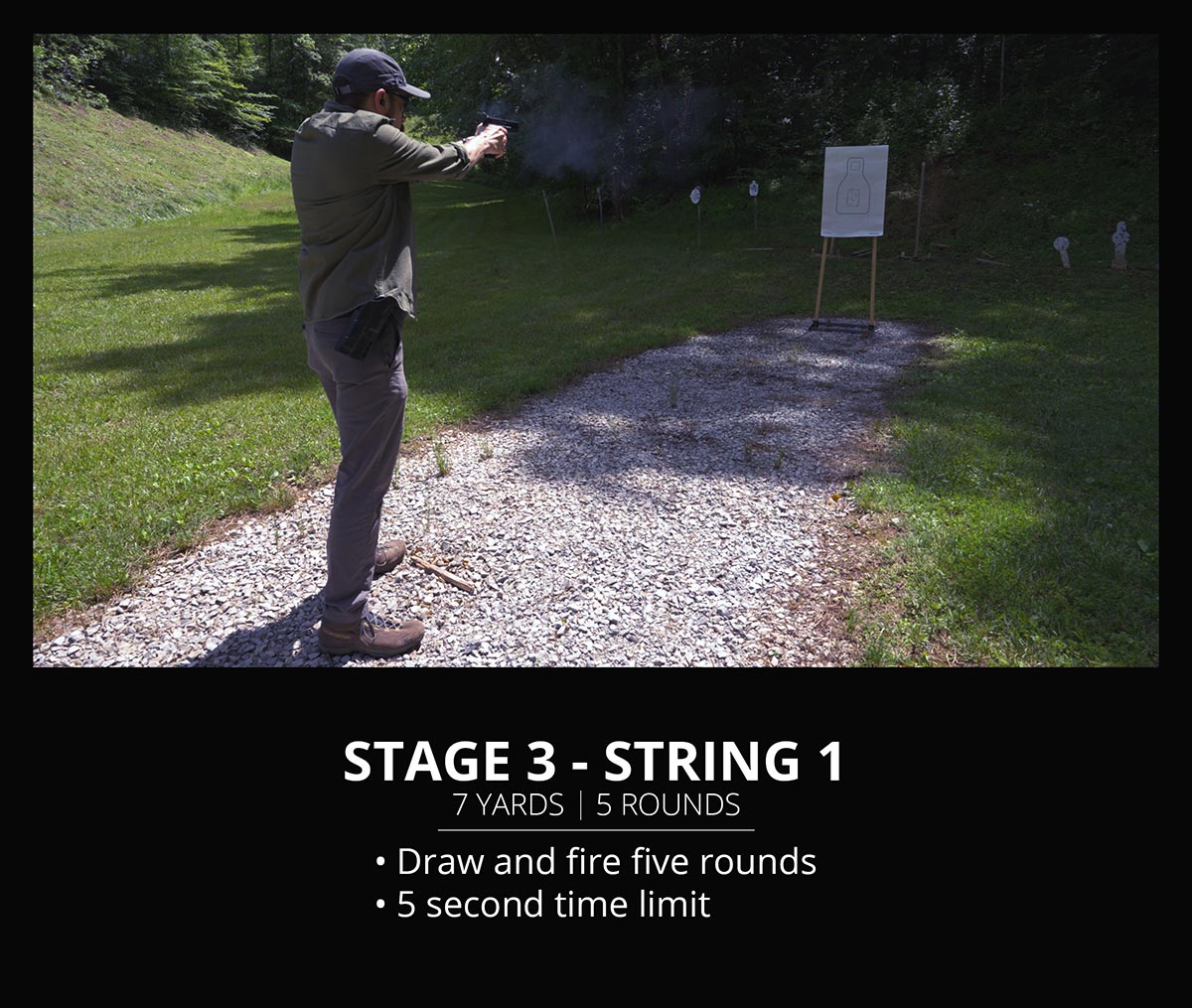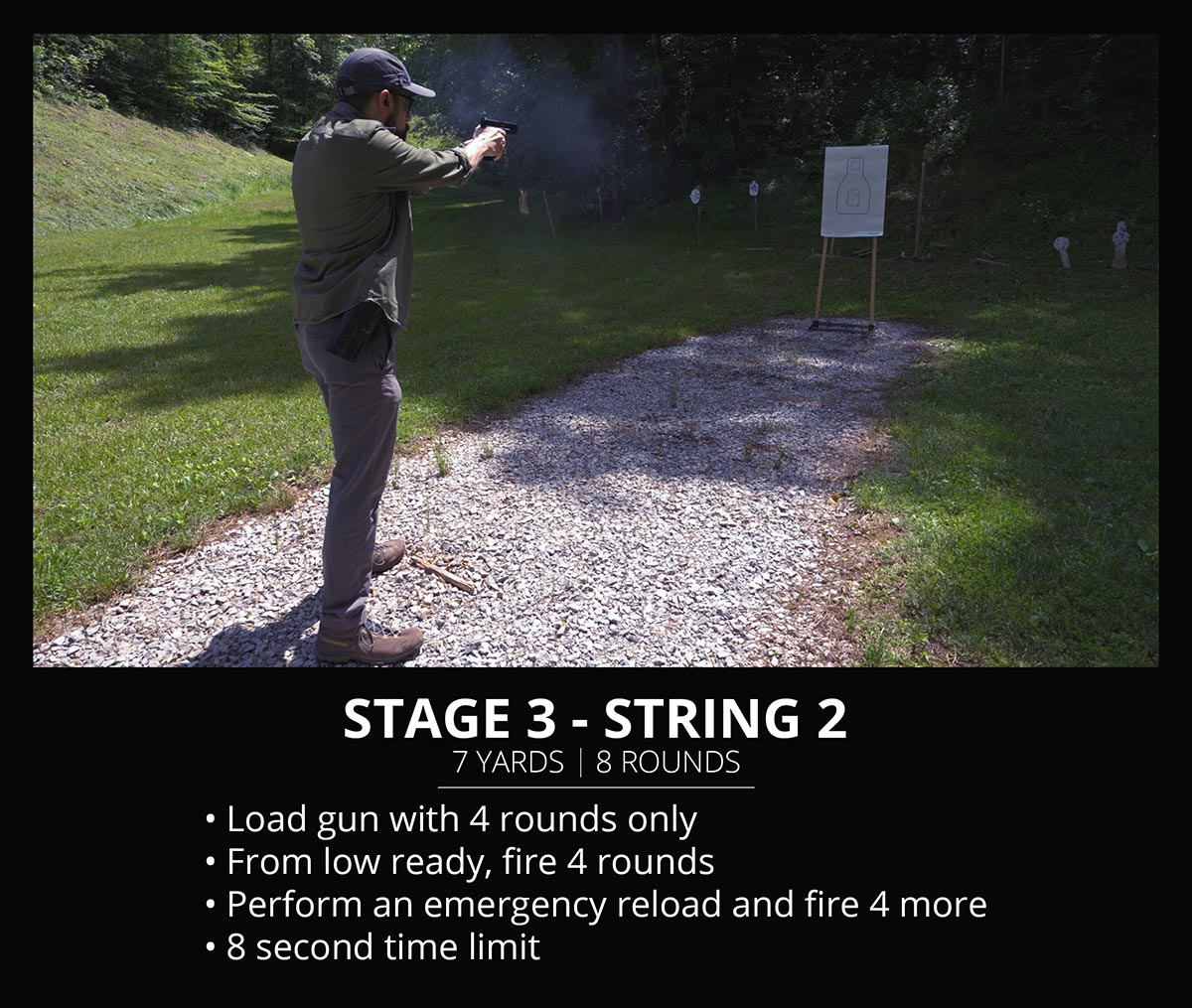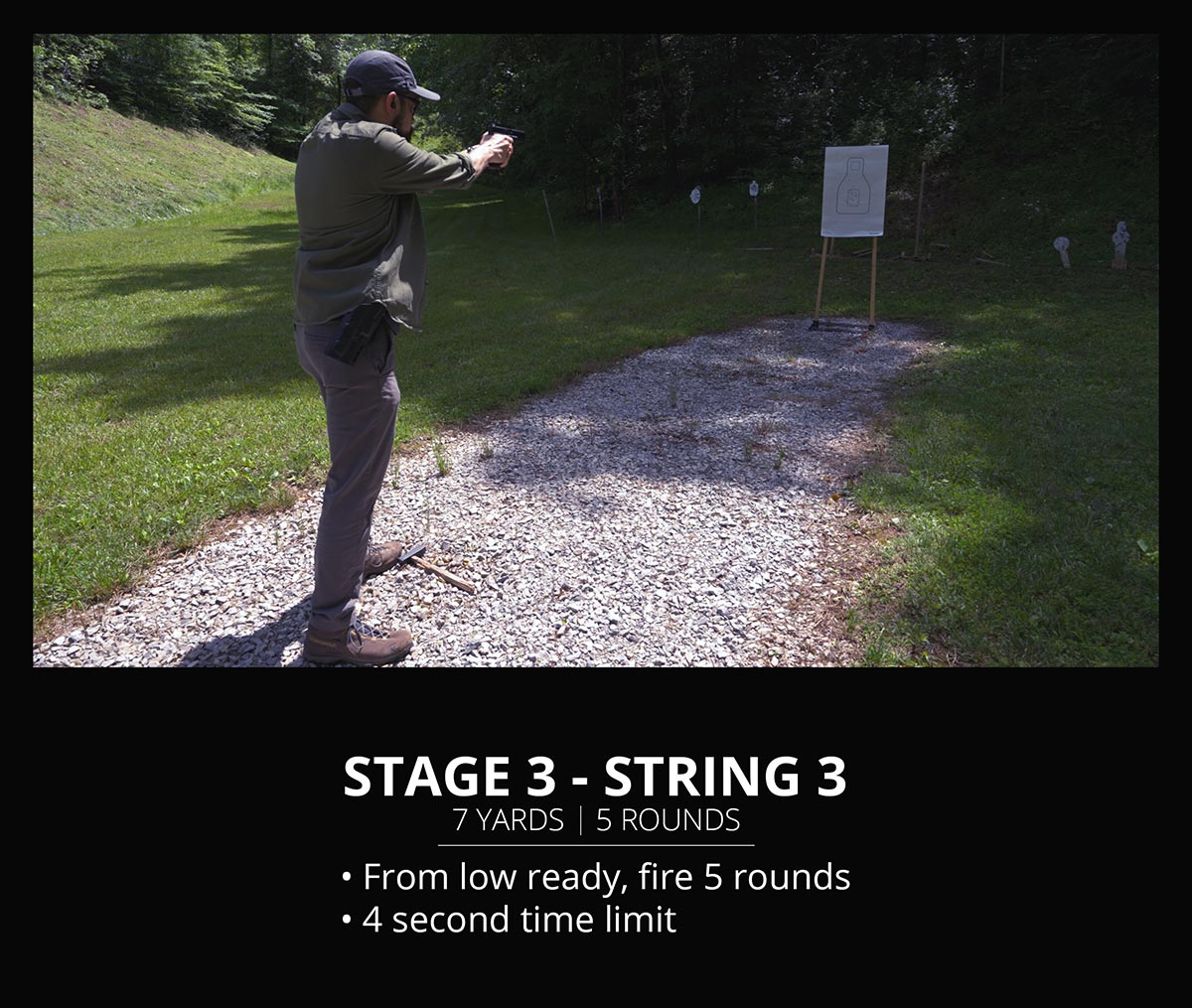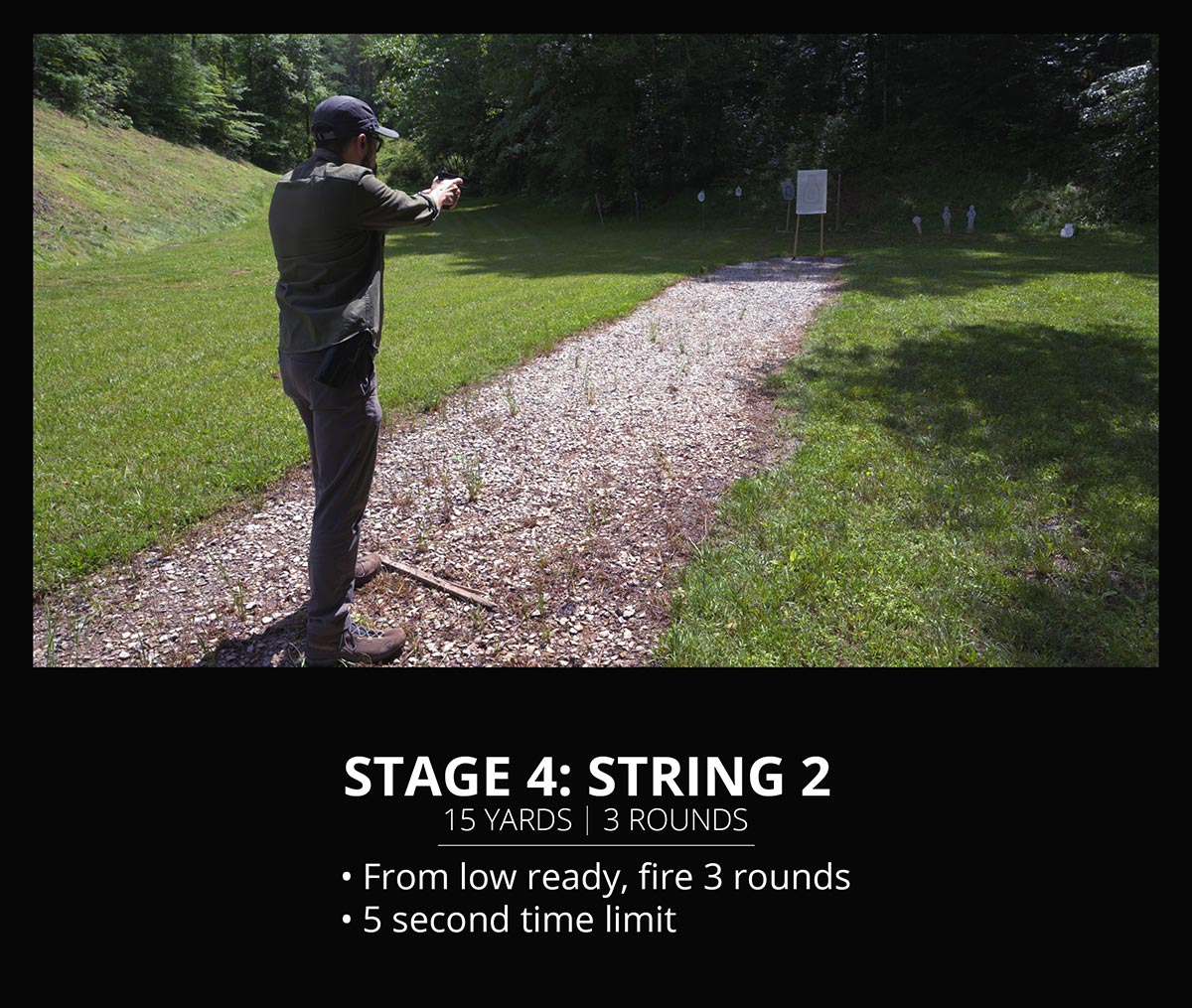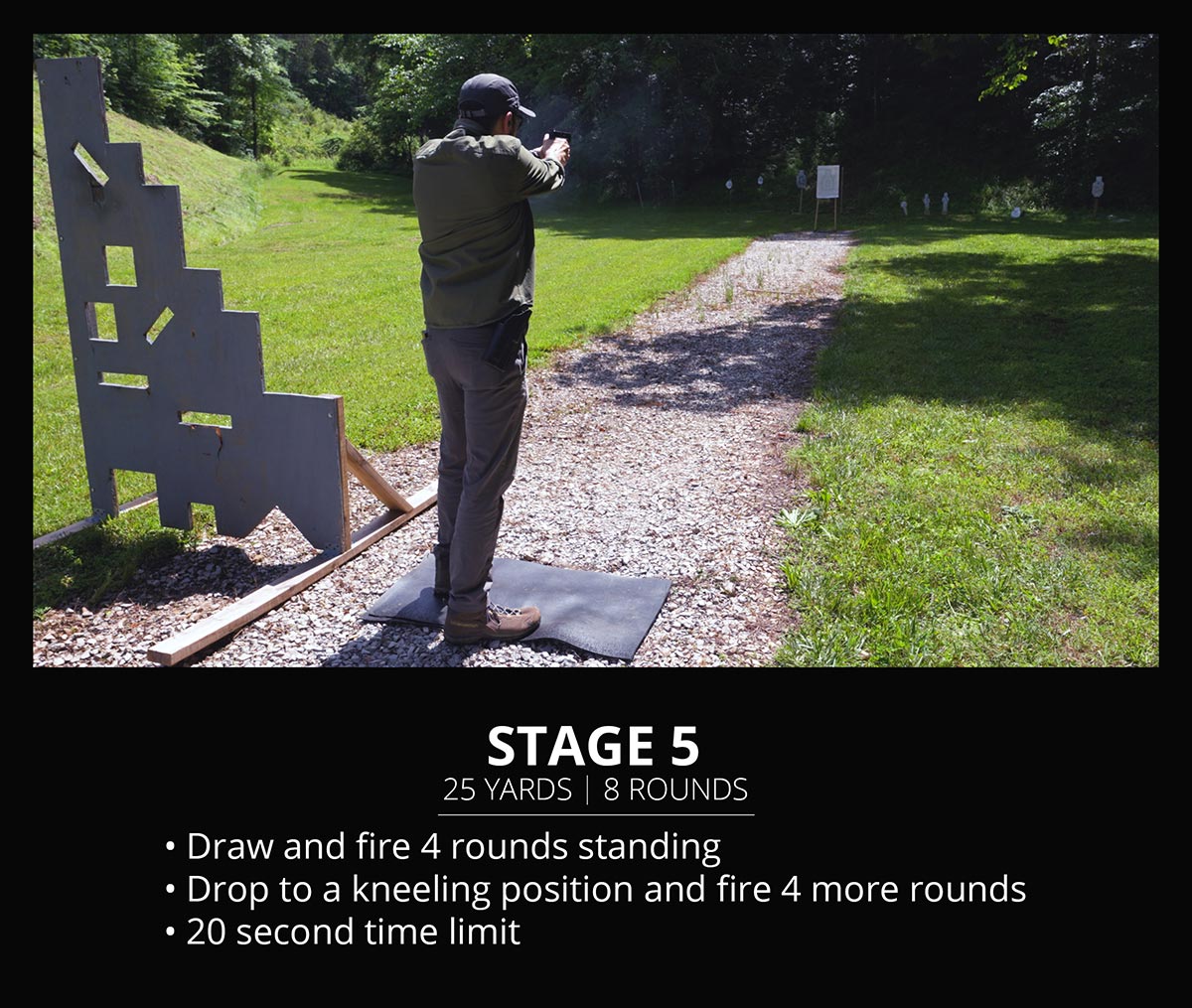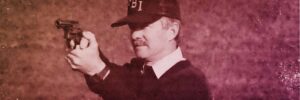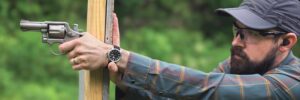Wrapping up our series on FBI pistol standards, we’re looking at the newest qualification test from 2019. We’re also digging into the FBI’s sidearm choices from the 90s to the present, including the infamous 10mm ordeal.
Details are in the video below, or keep scrolling to read the full transcript.
Hey everybody, I am Chris Baker from LuckyGunner.com and today I’m going to talk about the 2019 FBI Pistol Test.
This is the third and final installment of our three-part series on FBI shooting standards and how they have evolved over the years. We’ve also delved a little into the history of the FBI’s shooting techniques and issued sidearms.
Last time, we left off in the late 1980s with the first FBI qualification course for semi-automatic pistols. They made some minor changes to that test over the years, but they kept that basic template until 2013.
Like I mentioned last time, the FBI had some trouble choosing a semi-auto for general issue. By the end of the 80s, some agents had semi-autos – mostly 9mm Sigs – others were still carrying revolvers. The Bureau had not chosen a standard model semi-auto to issue to all agents.
This was just after the infamous 1986 shootout in Miami, which had been partly blamed on poor ammo performance. So in addition to lagging behind in choosing a pistol, the Bureau was also under a lot of pressure to choose an adequate cartridge for it to fire. They knew that law enforcement all over the country would follow whatever decision they made, so they had to get it right.
FBI and the 10mm
That’s when the notorious 10mm fiasco began. I’m tempted to go on a long tangent here because this is an involved story and there are a lot of misconceptions about what actually happened. But that really needs to be its own video. So for today, I’ll try to give you the short version… which is still kind of long, but this is as short as I could make it.
Decision-makers within the FBI disagreed on whether to go with 9mm or .45 ACP. So they tried to split the difference. They experimented with a light 10mm handload and found it had ballistic performance just slightly better than existing 9 and 45 loads. In 1990, the FBI contracted with Smith & Wesson to produce the 10mm Model 1076 as the new sidearm for the whole agency.
Unfortunately, an alarming percentage of the first batch arrived with serious mechanical issues that made them unusable. Smith & Wesson tried to fix them, but even a year and a half into the contract, they were still shipping guns with defects.
On top of all that, 10mm ammo turned out to be a lot more expensive than the Bureau planned for. Agents also complained about the size of the 1076, which is understandable. It’s a lot of gun to carry around all day. Most FBI agents do not kick in doors and chase bad guys. They wear business clothes and investigate white collar crime or sit at a desk. They don’t want, and probably don’t need, a heavy full-size pistol.
There’s a longstanding myth that the FBI got rid of 10mm because too many agents couldn’t handle the recoil. Gun guys love this myth because it reinforces the stereotypes that cops can’t shoot and that FBI agents are incompetent. Despite whether there’s any truth to those stereotypes, they don’t apply in this case.
The only agents who ever even fired full power 10mm loads were the handful involved in the ballistic testing. From the very beginning, agents were issued reduced-power 10mm loads. It was essentially a .40 S&W before that cartridge existed. And they fired these out of the 40-ounce Model 1076. Excessive recoil was not among the FBI’s complaints about these guns.
By 1993, the Bureau abandoned 10mm and the Smith & Wesson contract. Agents who needed a sidearm got the 9mm Sig P228 as a temporary solution.
Okay, that was the short version. Let me know if you want the long version and I’ll see what I can do.
The Glock Era
In 1997, after a long and meticulous evaluation process including 14 different pistols, the FBI adopted the full size Glock 22 and compact Glock 23, both in .40 Smith & Wesson. For the first time since the early 80s, the Bureau finally had standard sidearms to issue across the entire agency.
In the last couple of videos, I talked more about the FBIs shooting techniques and training rather than the equipment. But since the 90s, there have not been a whole lot of noteworthy changes in those areas. Like I said, they used the same basic qualification test from 1988 to 2013. In 1996, they did switch from teaching a Weaver stance to Isosceles. But that was a minor shift compared to the change from one-handed hip shooting to Weaver in the early 80s.
The next big firearm-related change came with a 2014 white paper from the FBI Ballistics department that was leaked online. It was about why 9mm is the best available pistol cartridge for law enforcement. It had all the typical arguments you would expect: Modern 9mm loads are superior to the older ones. There’s only a negligible difference between 9, 40, and 45 in testing and real-world performance. 9mm has less recoil, it’s easier on guns, shooters are faster and more accurate. You’ve heard it all before. The only surprising thing about this paper was that it came from the same organization that soundly rejected the cartridge just 15 years earlier.
Nevertheless, in 2015, the Bureau officially announced their intention to switch from .40 S&W to 9mm. That became reality the following year when they chose the Glock 17 and 19 to replace the 22 and 23.
The 2019 FBI Qualification Course
But enough about all that, let’s look at the qualification course.
The FBI rolled out a new course in 2013. I’m not going to shoot that one today because I’ve actually already done a whole video on it. We covered it back in 2018 as part of the Start Shooting Better series, so you can watch that if you want to see the full course of fire.
Today I’m shooting the 2019 test. It’s similar to the 2013 test in terms of skills covered, but I think the 2019 test is a little easier. Most of it is shot from low ready instead of from the holster.
The course of fire is more straightforward than what we had in the previous videos. There are no barricades. All but four rounds are fired from a standing position. There’s only one timed reload.
You only need two magazines to shoot it. The longest string of fire without reloading is eight rounds, so you can run it with a single stack gun if you want.
I’m going to be shooting this with a Gen 5 Glock 17. This gun is completely stock except for an aftermarket striker control device, which doesn’t at all change how the gun handles or shoots. For a holster, I’ve got a Safariland ALS. I don’t know if the FBI is still using those, but they have in the recent past. It’s not really meant to be a concealment holster, but this course is supposed to be fired from concealment, so I’ll throw a shirt over it for the test.
The target is the QIT-99, which is a modified version of the old FBI Q target. For this course, we’re not using the head box or the center rectangle. Your hits need to be in the upper part of the silhouette.
Course of Fire
Okay, here’s the course of fire
Stage 1
Start at the three yard line. On the command, draw and fire three rounds with the dominant hand only, transfer the gun to your non-dominant hand and fire three more rounds. You have six seconds.
Stage 2
Stage two has three strings of fire. They’re all at the five yard line.
For the first string, on the command, draw and fire three rounds in three seconds.
Go to low ready and for string two, fire three rounds in two seconds.
Go back to low ready again. For the final string, fire six rounds in four seconds.
Stage 3
Stage three also has three strings of fire. This time, we’re at the seven yard line.
First string, draw and fire five rounds in five seconds.
Go to low ready. You need to have four and only four rounds in the gun at the start of this string. On the command, draw, fire four rounds, perform an emergency reload and fire four more rounds. You have eight seconds.
Go back to low ready for the third string. Fire five rounds in four seconds.
Stage 4
This is two strings of fire at the 15 yard line.
For string one, draw and fire three rounds in six seconds.
Go to low ready and for string two, fire three rounds in five seconds.
Stage 5
Stand at the 25 yard line. Draw, fire four rounds standing, drop to a kneeling position and fire four more rounds. You have 20 seconds.
Scoring
To score this one, count your hits inside the upper silhouette. There are 50 hits possible. You need 40 hits to pass or 45 for instructors. I was hoping to clean this one, but I yanked one of my shots on the 25-yard stage, so I got a 49.
Evolving Standards or Lowering the Bar?
This is not an especially challenging test. The effort I put into this run was minimal. I did it with a gun, holster, and carry position that I never practice with. I was moving at what felt like a leisurely pace and I was still well within the time limits.
In one sense, the 2019 FBI qual is a better reflection of the types of encounters agents are most likely to face compared to the older quals with heavy emphasis on 25-60 yards. On the other hand, the time limits and scoring are pretty generous, especially considering that agents and academy candidates get multiple opportunities to pass. It’s designed to allow the Bureau to qualify the maximum number of agents.
The whole reason I decided to do this series is because, for better or worse, the FBI’s practices hold a lot of weight. They have a major influence on local law enforcement as well as armed citizens and the public in general. The average person doesn’t know a thing about shooting standards, but if you tell them you can shoot an instructor score on the FBI test, most people would probably assume that means you’re an excellent shooter. What they don’t know is that the FBI made that test so they can qualify a forensic accountant or some other personnel they don’t expect to actually send out into harm’s way.
Ideally, law enforcement should be held to a higher standard and the 2019 qual seems like a dangerously low bar in that context. However, for the armed citizen, it’s not a bad test of basic competence. Can you outshoot an FBI agent? If that means getting a high score on the 2019 qual, it’s a good place to start, but it’s not really saying much.
If you really want to test yourself, I suggest something more like the Rangemaster Core Handgun Skills Test (PDF here) developed by Tom Givens. It’s not radically different from the FBI test, but it’s a bit more challenging and it’s scored differently – it rewards both speed and accuracy.
I hope you guys enjoyed this series on the FBI standards. Until next time, when you need some ammo, be sure to get it from us with lightning-fast shipping at LuckyGunner.com.
